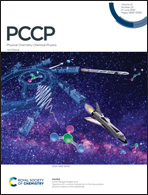Abstract
BiFeO3 (BFO)-based heterostructures have been widely studied to develop high-speed, high-density and low-consumption nonvolatile memory. In this study, the resistive switching (RS) behavior in metal/BFO/SrRuO3 (SRO) heterostructures was investigated. The I–V curves of Pt/Fe/BFO/SRO and Pt/BFO/SRO heterostructures demonstrate that the RS behavior in the Pt/Fe/BFO/SRO heterostructures results from the fact that ferroelectric polarization modulated the depletion layer width around the BFO/SRO interface. According to the fitting results of the I–V curves, the conductivity mechanisms are the interface-limited Fowler–Nordheim tunneling mechanism in the negative bias and the space-charge-limited conduction mechanism in the positive bias. Compared with the memory performance in the Pt/BFO/SRO heterostructures, the memory performance in the Pt/Fe/BFO/SRO heterostructures evidently improved. The Fe layer with a work function similar to that of the BFO layer can decrease the barrier height and reduce the accumulation of the injected charges at the top-electrode/BFO interface, which further improves the ferroelectric performance of the BFO layer.



 Please wait while we load your content...
Please wait while we load your content...